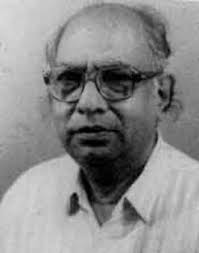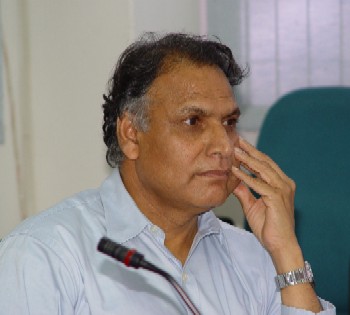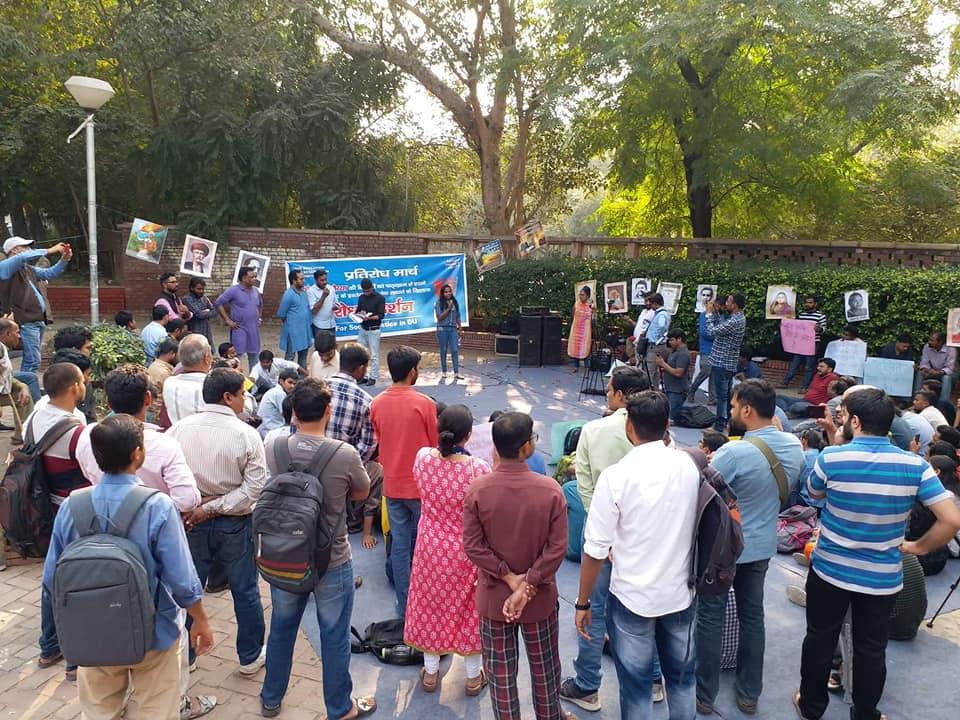Dr. K. Jamanadas
(First Published in September 2001)
 General Review
General Review
About Bal Gangadhar Tilak, he was a great scholar of Sanskrit. He was a great leader of RADICALS, they used to call themselves “Nationalists” and leaders of whole country. He was called “Lokmanya” meaning “recognized by the people” and was projected as leader of non-brahmins, but in reality, he was the leader of Brahmins alone. He started two news papers. He was jailed by the British for his writings. But he fought against the imperial power. His idea was to capture power from the British and restore it to the Brahmins, as was during Peshava rule. He openly said that non-brahmins need not take education and they do not have to take part in politics. Though he said, he does not like Untouchabilty, he refused to sign a memorandum for its abolition.
“Annihilation of Caste” of Dr. Ambedkar is based on the writings of Tilak. Also “Riddles in Hinduism” deals with his views about Gita. Ambedkar respected his intelligence and knowledge, but disliked his attitude about social reforms. Tilak had threatened to burn the pandal of “Social Conference” and only wanted political reforms and not the social reforms. The following information is drawn from the writings of Dhananjay Keer.
Important Life Events of Bal Gangadhar Tilak (1856-1920)
Birth July 23, 1856 1871 – Marriage – Satyabhamabai was illiterate and orthodox, died when Tilak was in Mandalay prison
1872 – Matriculation
1876 – B.A. (First Class) [Bachelor of Arts]
1880 – Started New English High School
1880 – Ll.B. [Bachelor of Laws]
1881 – Started “Kesari” weekly in Marathi, ed.- Agarkar
1881 – Started “Maratha” English weekly, ed. Tilak
1882 – Tilak & Agarkar sentenced four months for writings
1884 – Shahu Maharaj As President Deccan Edu. Society, Pune
1885 – Furguson College started
1887 – Becomes Editor of “Kesari”
1890 – Opposed to use Congress pendal for Social Conference
1889 – 91 – Opposed Age of Consent Bill, supported the Orthodox people and Criticized Ranade, Telang and Bhandarkar as “vidya alankrut durjan” (learned wicked).
1891 – Opposed Ranade in Social Conference at Nagpur
1889 – 1893 – Debate against Pandita Rama Bai
1893 – Hindu Muslim Riots
1893 – “Orion” Published
1897 – First Political Case- 18 months imprisonment for articles in papers, which govt. thought responsible for murder of Capt. Rand by Chaphekar brothers
1901 – 1920 – Tai Maharaj Adoption Case
1901 October – “Vedokta Prakaran” – See details below
1903 – “Arctic Home in the Vedas”, inspired by “Rig Veda” English Translation by Max Mullier, who sent the book to him in prison.
1905 – Partition of Bengal opposed
1907 – Surat Congress – Congress Divided due to Tilak, who was leader of Radicals Group.
1908 July 22 – Six years imprisonment at Mandalay prison, for three articles in “Kesari” on Khudiram Bose, who had in Muzaffarpur thrown a bomb on British Officer.
1914 June 14 – Released from prison
1915 – Published “Gita Rahasya”, written during imprisonment
1915 – Tilak opposed the Age of Consent Bill, brought in by Shastri, to raise the minimum Age for marriage.
1916 April 28 – Established “Home Rule League” at Belgaon
1916 December – Lukhnow Congress – Recognized Muslim Demands of Separate Electorates for Muslims.
1918 – He opposed, a Bill by Vithalbhai Patel, to legalize the inter-caste marriages. He described such marriages as “hindu-hindu che sankar karak vivah”. He declared the Bill to be against Hindu religion and said that the progeny of such marriages may inherit the property of father only and not of others. A Brahmin looses his brahmin-hood, if he marries a shudra woman, he opined.
1918 – Trip to England to file suit of defamation against Sir Valentine Chirol, who had held Tilak’s writings and work responsible for violence in India and called him “Father of Indian Unrest”. Tilak lost the case in Feb. 1919 and Returned back to Bombay in Nov. 1919
1919 December – Amritsar Congress
1920 Feb-March – His meetings were disrupted in Sangali, Pune and Bombay by non-Brahmins because of his speech at Athani saying non-Brahmins had no business to take education or to take part in politics.
1920 1st August – Death in Mumbai
Festivals started by him
He was against the Non-Brahmin movement, which was started by Mahatma Phule and promoted by Shahu Maharaj. To oppose this movement, he started two festivals. One was “Shivaji Jayanti” and second was “Ganesh festival”.
He demanded that Shivaji be declared a “rashtra purush” of whole of India through his “Shivaji Utsava”, but did not dare to take back Christian or Muslim converts into Hinduism unlike Shivaji. One Gajanarao Vaidya “purified” a Brahmin convert to Christianity and insisted that Tilak should take meals sitting along with him, but Tilak refused.
Bahmanic scholars praise these moves as Nationalistic, and against the British. Whereas, in fact, the moves were against the “Satya shodhak movement” of Mahatma Phule, and against the Muslims. Some Satya Shodhak activists that time had complained against the “Ganesh festival” to British Govt. But no action was taken by them. Dr. Ambedkar labeled Tilak as “Politically Liberal and Socially Tory”
Attitude towards Dalits
He was very orthodox about Dalits. He addressed an All India Untouchability Removal Conference on 19th March 1918, organized by Karmavir Shinde, saying, “The problem of untouchables should be and can be solved early politically or socially. The Shudras have the same rights as those of Brahmins, Ksatriyas and Vaishyas, But they should not utter Vedic mantras. If the God himself observes untouchability, I will not consider him God. This is a custom started by Brahmins in olden days.” After the speech, 250 leaders published a declaration taking a vow that they will not observe untouchability in their own day to day personal lives. Tilak refused to sign on this declaration. Wrangler Paranjape commented that Tilak spoke like this about Untouchables, because he was to go to England and was sure to be asked about rights of Indian labourers and Dalits. Previously Dalits from Bombay had applied for temple entry along with him, which he had not obliged. He said, ‘self-rule was more important than these social problems, which we would look after swaraj. I will dine with him who will get swaraj’.
He always opposed the social reforms and supported the orthodox brahmanic social order. Keer laments that Tilak did not give any importance to social equality and social justice.
Gandhi thought that methods of Tilak were “devilish”. Though Tilak did not ask anybody to kill the British, he motivated armed rebellion of Chafekar, Savarkar, Bapat etc., helped Chafekar with food while in hiding, sent people to Nepal to try to learn and establish factory for manufacture of explosives, approached Russian Embassy for military training to Hindu youth.
Shahu and Tilak
Tilak was junior contemporary of Mahatma Phule, and senior contemporary of Shahu. It must be well realized that Phule and Ambedkar were separated by time gap which was filled in by Shahu who was the link between Phule and his disciple Ambedkar.
When Shahu came on throne of Kolhapur state on 2nd April 1894, Tilak wished him luck and said through editorial in “Kesari”, “let God give him wisdom, courage and long life to carry on his work without expecting any rewards, – the work of the furtherance of “Hindutva” – which is his bonden duty”
Shahu built a large number of hostels for students of all the different castes, and provided all facilities to non-brahmin students from temple revenue. In his kingdom, schools, hospitals, water reservoirs, palace and even the royal dinning was thrown open to all castes. He opened a Tea shop for a Dalit and took tea there and kept dalit servants. He helped Ambedkar to start a fort nightly journal “Mooknayak”, and also helped him in his education in England.
He stopped the Dalit “vatan” (bonded labour – for which they got a small piece of land) and later appointed them as “talathi” (keeper of village land records). What he did in 1918, Brahmin Chief Minister, Kher, of Bombay Presidency could not do in 1937, but was done by a non-brahmin Chief Minister, Chauhan, in 1959. Shahu started Industries, built tanks, opened schools for training of ‘patils’ (non-brahmin village administrators) and later canceled ‘kulkarni vatans’, for which all brahmin community raised a hue and cry. He passed a law allowing remarriage of widows in 1917, and allowing Inter-caste marriages in 1918.
He started work of “Satyashodhak Samaj” of Phule in 1911 in his State. He started “purohit school” i.e. school for making a priest for non-brahmin students, which was unheard of till then, and conducted 1513 religious functions, including 226 marriages, by them in the capital alone, just in one year in 1913, by non- brahmin priests, causing hue and cry among the brahmins.
He was the first king who advised opening of Labour Unions, saying that such Unions are necessary to keep a check on capitalists, who “are mostly from Brahmins and Vaishyas”. This was in 1918, much before Jawaharlal Nehru or Communist leader S. A. Dange paid attention to the Russian Revolution, and thus furthered the cause of Labour Movement started for the first time by Mahatma Phule and Lokhande, in India.
Shahu declared he wants “swaraj” but first he wants to remove caste distinctions and discrimination. Otherwise, he said, swaraj will mean a Brahmin Rule of a fistful over the majority of Bahujans. He, accordingly, sent memoranda to Governor General demanding Caste wise Representation.
In his historic speech in Mangaon near Kolhapur on 15th April 1920, where he introduced Dr. Ambedkar to the Dalits as their own leader, he criticized those like Tilak, who wondered what the relation of politics with untouchability was, and declared unless you treat all men as human beings there can be no patriotism, and denounced the leaders who only talk and do nothing. In that meeting he pronounced Dr. Ambedkar as the leader of Dalits and expressed the hope that Ambedkar would liberate them, and one day be leader of whole of India.
Tilak had advocated that before starting new schools for compulsory primary education for the masses, the existing schools (of brahmins) be provided with better ventilation and facilities. Shahu criticized this next day at Nasik, calling this statement of “Kesari” as disgusting, quoting and praising England’s Labour Party’s policy that ‘No cake to a few until all are served with bread’. He criticized Tilak, saying here while 90 percent are starving to ask for butter on the bread of ten percent, shows the tendency of these people towards the masses.
Vedokta Prakaran
‘Vedokta’ means as mentioned in Vedas, but it has assumed the meaning of performing puja and ‘sanskaras’ according to Vedic mantras. Vedas do not mention anywhere that particular people should not read Vedas, but later Smritis and Puranas put these restrictions. Vivekanand had commented that this is like servants dictating the masters. Ambedkar has proved that those Ksatriyas, who did not accept the supremacy of Brahmins were degraded to Shudra category. (“Who were the Shudras”).
Brahmins declared the Ksatriyas ended with Nandas, and that there are only Brahmins and Shudras in Kali age. Shivaji was refused Coronation. (See “Who were the Shudras” for details). But he got coronation done and also the thread ceremony of his children. But later puja and sanskaras were done by “puranokta” mantras.
When Shahu objected to his purohit doing puja by ‘puranokta’ mantras, without taking bath, the purohit declared that Shahu being a Shudra is not entitled to Vedic mantras nor is bath required for him. Shahu took this as an insult and later issued an order to perform all pujas in the palace as per Vedic mantras and declared that one who disobeys will not get any ‘daxina’. He then stopped the Rs. 30,000/- grant to his purohit, Rajopadhye.
Tilak, who defined ‘Hindu’ as one who recognizes authority of Vedas, blamed Shahu asking rights for Vedic rites. Tilak supported the Purohit, Rajopadhye, and threatened to seek redress from sovereign British power, and also threatened of caste riots. He denounced the right of kings to stop income of Brahmins and also criticized Gaekwad, the Maharaja of Baroda, saying that these kings have no right to meddle in the affairs of god and religion and that a few trips to England do not make them competent to speak on these matters. When Rajopadhye did not relent, Shahu forfeited his “vatan”. Rajopadhye appealed to the British authorities, who turned it down at all levels.
Shankaracharya gets involved
The last stages of battle of Vedokta, involved Shankaracharya of Sankeswara Peetha against Shahu. It was decided by a treaty in 1863, that Swami must obtain sanction of Kolhapur Durbar for any appointment of any disciple, and he must not mortgage property of the mutt. During Vedokta, one Bhilvadikar was the swami, who had appointed one Brahmanalkar as chief disciple, without asking the Kolhapur Durbar, and had also mortgaged Mutt’s property. Brahmins referred the Vedokta matter to Shankaracharya, Brahmanalkar, who strongly condemned Shahu.
Tilak was supporting Brahmanalkar. He arranged a grand reception for Shankaracharya in Pune, where he had ‘padya-puja’ (worship of his feet) and was showered with expensive gifts. Guru Bhilvadikar coveted the share of this riches, and there ensued a fight among the guru and disciple. Mediation of Tilak was fruitless. On 5th December 1905, the guru, Bhilvadikar, gave royal insignia and blessed the Maharaja, Shahu, at a place near Kolhapur by ‘Vedokta’ rites, thus recognizing his ‘ksatriyahood’.
Thus there was a tussle among the guru and disciple for income of Kolhapur Mutt. Brahmanalkar started talks direct with Shahu, and later declared him a ksatriya, on 10th July 1905, and started getting the income of Mutt. Guru Bhilvadikar got enraged and declared Brahmanalkar’s appointment as Shankaracharya as canceled, and issued a ‘Furman’ removing him from the caste on 30th April 1906, and later appointed another disciple, Dixit on 24th August 1906. Thus there were now two Shankaracharyas. There was a lot of charges and counter charges from all sides. The reaction of N.C.Kelkar, the biographer of Tilak, is worth mentioning. He blamed Shahu for ‘trying an experiment of annihilating the caste system by using the royal powers all his life, just for the fun of it’. Though he does not accept the sincerity in the attempts of Shahu, this abuse of Shahu has, in fact, become his Adornment.
Raobahadur Bole saw Tilak and asked him, “Though you approve of a non-Hindu Max Muller reading Vedas, why do you oppose in your “Kesari” non-brahmins to read Vedas and perform Vedic rites?” Tilak said that the article was written in his absence. But his biographer Kelkar avers that it was written by Tilak, and is included in the “Lokmanya che kesari til lekh”.
As a result of all this struggle, Shahu started non-brahmin priesthood condemning ancestral priesthood. This was victory of Mahatma Phule’s movement.
In 1921, Shahu appointed a saintly non-brahmin person, Mr. Patil, on the vacant seat of “mouni mutt” at Patgaon and declared him as ‘ksatra jagatguru’. He expressed opinion that this appointment is not hereditary, jagatguru could marry if he wishes, he must not accept ‘padya-puja’, and strive for service of country and people, and let there be no broker between god and man. Thus Shahu ended the ancestral rights of priesthood.
~
[Courtesy: ambedkar.org, September 14, 2001]










